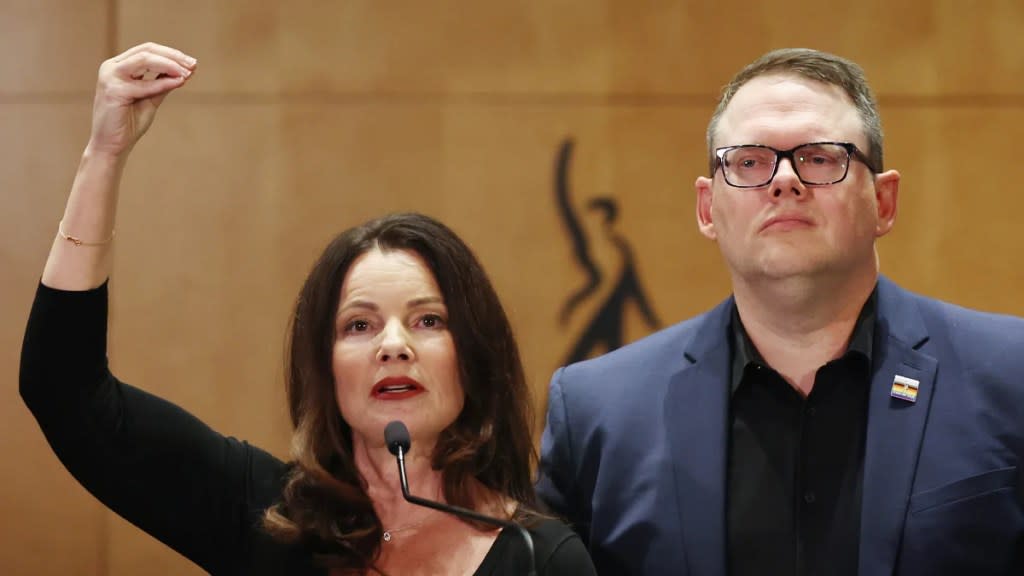Hollywood Unions’ 3-Year Contracts to Collectively Cost Studios ‘Close to $600 Million’ Per Year, Moody’s Estimates

Moody’s Investor Service is now forecasting that the total cost of the SAG-AFTRA, Writers Guild of America and Directors Guild of America contracts will be closer to the higher end of its initial estimate of $450 million to $600 million per year for three years.
“Still, absorbing that cost, spread over a large number of projects will not
pose a credit risk for the studios in isolation. Especially considering global yearly spending on TV and film entertainment is over $100 billion, with the US a big chunk of that,” Moody’s Investor Service senior vice president Neil Begley wrote in a new report Friday. “We believe studios are unlikely to change their overall production budgets to accommodate these higher costs, or reduce volume, and will instead look to save where it will not materially hurt amount of material produced or quality of storytelling. This includes using fewer A-list actors; greenlighting less on-location filming; and trimming postproduction and special effects spending.”
SAG-AFTRA has valued its own contract at more than $1 billion in total over three years.
The credit ratings agency predicts that studios will look for more tax breaks, financing subsidies and aim to produce more projects in locations outside of the U.S.
“That means more imported content and stories that perform better across borders,” Begley said. “This greater level of cost consciousness, beginning at the greenlighting stage, is already underway as companies try to reach streaming profitability quicker, having transitioned from a period of trying to get to scale at any cost.”
Moody’s anticipates the majority of streamers will post “significant streaming losses through 2024 and 2025,” citing their exposure to broadcast and cable networks and the “painful transition from linear TV to direct-to-consumer streaming.”
“As more mature markets reach for break-even, new international markets are being launched, which will lose money for years,” Begley said. “As a result, balance sheets, cash flow and credit metrics for many will continue to be strained until the industry matures, and perhaps consolidates — which we believe is necessary.”
The firm estimates that the collective studio and network industry will have an upfront cash flow benefit in excess of $10 billion as a direct result of the strikes.
“Some of this benefit will reverse in 2024 as they spend to backfill empty pipelines, but most will not be recovered as the schedules just shift out in the calendar,” Begley added. “When considered, this clearly offsets some of the union gains and higher studio costs related to the new agreements.”
Moody’s latest report comes as many Hollywood dependent businesses have been struggling to make ends meet during the production pause. The firm believes that businesses further down the chain from actual media production that still depend upon Hollywood output, such as movie theaters and outdoor advertising, will be able to breath a sigh of relief as production starts to pick back up beginning in the first quarter of 2024.
“Most at risk if the strike continued into 2024 would have been movie theater exhibition companies, already strained from weaker balance sheets and credit metrics, and lighter release schedules as they struggle to return to pre-pandemic box office levels,” Begley said.
However, he argued that the timing of a return to an $11 to $12 billion annual box office will likely be deferred until 2026 as the dual strikes have pushed several anticipated 2024 titles to 2025 or pulled them from the calendar altogether. He also said it will take some time for scripted TV series to recover for spring 2024 and that some networks could potentially wait for fall 2024 to release new scripted shows.
“Since the strikes were resolved long enough before 2024, we do not expect credit ratings to come under pressure specifically because of the work stoppages,” Begley’s report concluded.
SAG-AFTRA’s tentative agreement, which went into effect on Nov. 9 and runs through June 30, 2026.
The deal includes protections against artificial intelligence, a fund that will be based on steaming residuals and will be operated by trustees from both SAG-AFTRA and AMPTP studios as well as higher minimum increases than either the DGA or WGA received.
“We are exceedingly grateful for all the support from the entertainment unions throughout the strike. This victory is for all of us,” SAG-AFTRA leader Duncan Crabtree-Ireland said during a press conference on Friday. “While the gains in these new contracts will keep the entertainment industry sustainable for working class performers, they serve as an example of what can be accomplished through collective action and solidarity.”
The post Hollywood Unions’ 3-Year Contracts to Collectively Cost Studios ‘Close to $600 Million’ Per Year, Moody’s Estimates appeared first on TheWrap.

